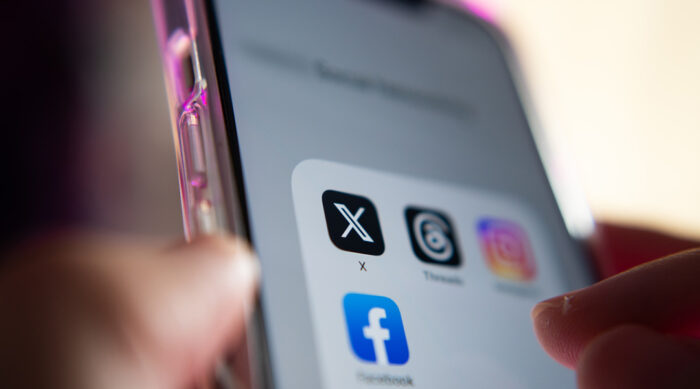
Help – someone is impersonating me! Social media is a funny thing – it allows people to present their lives in a very articulated way through pictures, videos, and other personal information. While content is usually posted with good intent, there are people who steal others’ content and reuse it for themselves – particularly when creating impersonation accounts. Regardless of how careful you are on social media, it isn’t uncommon to find impersonation – or fake – social media accounts. In fact, Facebook says there’s a large number of fake profiles on its network – around 5%.
Oftentimes, these accounts use someone’s actual pictures, name, and personal information. While there are steps you can take to verify your social media accounts and protect information, anything you post online can be used by others.
If you find your content or personal information being used by someone else to create a fake account, there are actionable steps to take. The process may vary slightly depending on the platform, but here is a general guide that covers the common steps across major social media platforms. Buckingham offers tips on how to report said impersonation account.
What’s an Impersonation Account?
An impersonation account on social media refers to a profile that falsely represents a person, entity, or organization. The individual behind such an account typically creates a profile using someone else’s name, photos, and other personal information with the intent to deceive others. These actions could constitute online defamation or other forms of privacy torts. The motives behind creating impersonation accounts can vary, including pranks, online harassment, identity theft, or spreading false information.

How to Report a Fake Account
- 1. Gather Information:
- Take note of the impersonating account’s username, profile picture, and any relevant posts.
- If possible, collect screenshots of the impersonation and any interactions that demonstrate the deceptive nature of the account.
- 2. Choose the Appropriate Platform:
- Identify which social media platform the impersonation is occurring on (e.g., Facebook, Twitter, Instagram, LinkedIn).
- 3. Visit the Impersonation Reporting Page:
- Most social media platforms have a dedicated reporting page for impersonation or fake accounts. This page is usually found in the platform’s Help Center or Support section.
- 4. Select the Impersonation Option:
- Navigate to the impersonation reporting section and select the option that best describes the issue. This is often labeled as “Report an Impersonation Account” or something similar.
- 5. Provide Details:
- Fill out the provided form or follow the on-screen instructions to provide specific details about the impersonation. Include the username of the impersonating account, a link to the account, and any additional information that may be relevant.
- 6. Submit Evidence:
- Attach any screenshots or other evidence you have collected to support your report. This can strengthen your case and help the platform understand the nature of the impersonation.
- 7. Follow Up:
- Some platforms provide a reference number or confirmation after you submit a report. Keep this information for future reference, and periodically check the status of your report if the platform allows for it.
- 8. Review Platform-Specific Guidelines:
- Familiarize yourself with the platform’s specific guidelines regarding impersonation. Different platforms may have varying policies and procedures.
From fake Facebook accounts to Instagram profiles, here are platform-specific steps for reporting impersonation on some popular social media sites:
How to Report a Fake Facebook Account
How to Report a Fake Twitter Account
How to Report a Fake Instagram Profile
Report the account through the in-app reporting feature or use Instagram’s online reporting form: https://help.instagram.com/contact/1652567838289083
How to Report a Fake LinkedIn Profile

How to Secure Social Media Accounts
Securing your social media accounts is crucial in protecting your personal information, privacy, and online identity. Here are some essential steps to help you enhance the security of your social media accounts:
Use Strong and Unique Passwords
- Create strong, complex passwords that include a mix of uppercase and lowercase letters, numbers, and symbols.
- Use a unique password for each social media account to prevent a security breach on one account from affecting others.
Enable Two-Factor Authentication (2FA)
- Turn on two-factor authentication whenever possible. This adds an extra layer of security by requiring a second form of verification, such as a code sent to your mobile device, in addition to your password.
Regularly Update Passwords
- Change your passwords periodically to reduce the risk of unauthorized access.
- Update your passwords immediately if you suspect any security issues or if there has been a security breach on the platform.
Verify Your Accounts
- Verifying social media accounts is crucial for ensuring the authenticity of online identities, promoting trust among users, and mitigating the risks of impersonation and misinformation. Verified accounts also help users distinguish genuine profiles from potential scams or fraudulent activities, fostering a more secure and reliable digital environment. Read more in our blog post, “How to Verify Business Social Media Accounts.”
Be Cautious with Third-Party Apps
- Be selective about the third-party applications and services you connect to your social media accounts.
Beware of Phishing Attempts
- Be cautious of phishing attempts through emails, messages, or links that try to trick you into revealing your login credentials. Verify the authenticity of any communications, especially those requesting sensitive information.
Regularly Monitor Account Activity
- If you notice any unfamiliar activity, investigate immediately and take appropriate action. THis includes login history and devices connected to your account.
- Develop an online reputation management strategy to regularly monitor your account and what others may be saying about it (if you own/run a business).
Keep Software and Apps Updated
- Regularly update the apps and software associated with your social media accounts.
- Updates often include security patches that help protect against vulnerabilities.
By implementing these security measures, you can significantly reduce the risk of unauthorized access and enhance the overall security of your social media accounts. Stay vigilant and proactive in managing your online presence to protect your personal information and privacy.